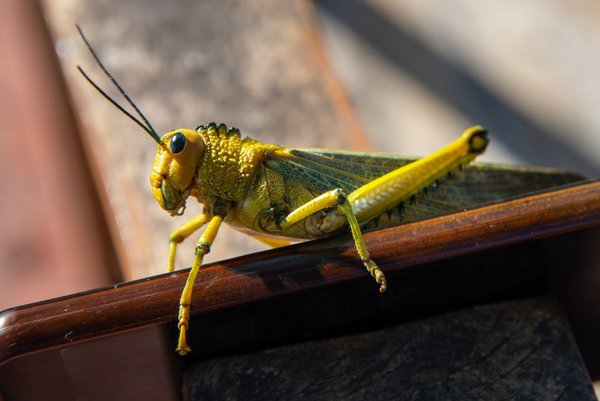- Share this article
- Subscribe to our newsletter
Locust threat in Latin America
The 2019-2020 desert locust plague has caused immense damage in Africa, the Arabian Peninsula and South Asia. And in mid-May, swarms of the South American locust were reported in south-western parts of Paraguay. By the end of the month, they had entered Argentina’s northern province of Formosa, moving on later to Corrientes Province, which borders on Brazil and Paraguay. The United Nations Food and Agriculture Organization (FAO) fears that above-average winter temperatures in the region, together with below-average rainfall in southern Brazil, could facilitate the spread of swarms, threatening key winter wheat and barley areas in Argentina, southern Brazil and western Uruguay.
Locusts are grasshoppers which normally live in small numbers and do not pose a threat to agriculture. Drought conditions followed by rapid vegetation growth cause these animals to breed more abundantly and become gregarious and migratory. Adults are equipped with much longer wings, enabling them to fly distances of around 150 km a day in huge swarms typically consisting of around 150 million locusts per square km. In a single day, such a swarm can devour the same amount of food that around 35,000 people would require.
The present desert locust crisis in Africa and Asia is believed to have been triggered by heavy rains in the South Arabian peninsula, ultimately resulting from climate change impacts in the Indian Ocean region. Plagues of the South American locust can develop following substantial rainfall in a desert and semi-desert area covering parts of Argentina, Paraguay and Bolivia. One such plague, occurring in 1933, caused the destruction of two million tons of crops. The South American locust is believed to be the most harmful of all locusts.
Locust numbers started growing in Argentina, Bolivia and Paraguay in 2015, largely because of mild winters and abundant rainfall. By July 2015, locust swarms of up to 25 square km had caused damage to woodlands, pastures and crops in northern Argentina. In January 2016, an outbreak of locusts in Bolivia’s key cereal-producing district brought about damage to soybean, maize, sorghum and groundnut crops as well as citrus trees. Further large swarms were identified in northern Argentina in June 2017, although damage to agriculture was only limited. Nevertheless, the potential threat of outbreaks prompted Argentina’s Ministry of Foreign Affairs to develop a Regional Programme of Management of the South American Locust, financed by the Argentine Fund for South-South and Triangular Cooperation, and centring on joint efforts with Bolivia and Paraguay to stem possible plagues.
The swarms reported in the region this year have made relatively slow progress owing to low temperatures and above-average rainfall. Surveillance activities and aerial control operations have been carried out by the National Food Safety and Quality Service (SENESA) since May, and SENESA says that infestation levels have been reduced and locust-induced crop losses have been limited in the province of Corrientes. SENESA has also reported localised damage to maize, sweet potatoes, citrus trees and sugar cane in the province of Formosa, wheat in the province of Santa Fé and pastureland in the province of Corrientes. Bolivia and Paraguay appear to have had locust swarms under control so far.
However, weather forecasts for the winter period point to a high likelihood of above-average temperature across the entire region and below-average rainfall in southern Brazil, presenting favourable conditions for the swarms to spread. The FAO warns that if the locusts proceed to key winter wheat and barley producing areas in Argentina, southern Brazil and western Uruguay, they could cause significant damage to crops that would be harvested in the last quarter of the year. In late June, the Government of Brazil declared a state of phytosanitary emergency in southern Rio Grande do Sul and Santa Catarina states. It has launched a comprehensive response plan including the use of aerial spraying where necessary. Farmers have been advised to immediately contact the local authorities if they spot locusts and then strictly follow the application guidelines that SENESA has provided for pesticides in order to avoid severe health risks to people and non-target insects such as bees.
Author: Mike Gardner, journalist, Bonn, Germany





Add a comment
Be the First to Comment